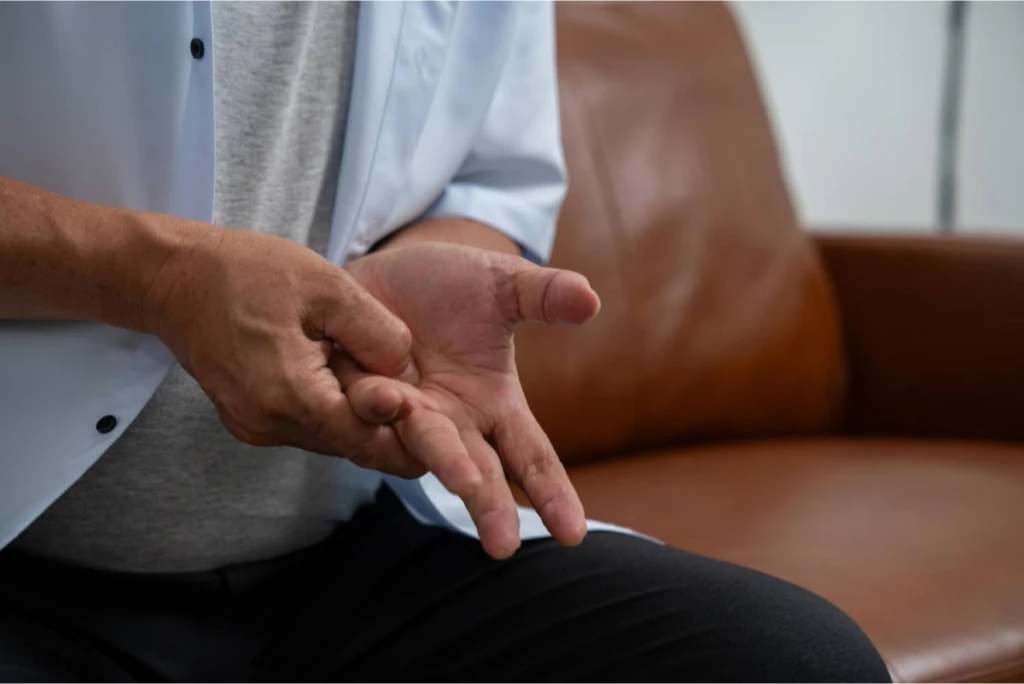The world of arthritis treatment is buzzing with developments that might just make your life with arthritis easier. From cutting-edge medications to non-invasive options, there’s a ton of new stuff happening in the fight against joint pain and inflammation. Whether you’re dealing with rheumatoid arthritis, psoriatic arthritis, or osteoarthritis, there’s treatments coming.
Understanding Arthritis
Arthritis is a widespread condition that affects millions of Americans, causing joint pain, stiffness, and decreased range of motion. To get a handle on arthritis treatment, you need to understand the basics of this condition.
Types of Arthritis
There are over 100 types of arthritis, but the most common ones you’ll see are osteoarthritis and rheumatoid arthritis. Osteoarthritis is the wear-and-tear type that often comes with age or joint injuries. Rheumatoid arthritis is an autoimmune disease where your body attacks your joints, causing inflammation and pain.
Other types include psoriatic arthritis, which can affect people with psoriasis, and gout, which causes sudden pain often in the big toe. Each type has its own set of challenges and treatment approaches.
Common Symptoms
The symptoms of arthritis can vary depending on the type, but there are some common signs to watch out for. You might experience joint pain, stiffness, and swelling. These symptoms can make everyday tasks like combing your hair or climbing stairs hard.
For osteoarthritis, you might hear a grating sound when you move the affected joint. With rheumatoid arthritis, you could feel fatigue and notice that your joints are warm to the touch. Psoriatic arthritis can cause changes in your nails while gout often leads to sharp pain in your big toe.
Risk Factors
While anyone can get arthritis, certain factors can increase your risk. As you get older, your chances of developing arthritis go up. Women are more likely to get certain types of arthritis, like rheumatoid arthritis, while men are more prone to gout.
Your genes play a role too. If arthritis runs in your family, you might be more likely to develop it. Being overweight puts extra stress on your joints like your knees and hips increasing your risk of osteoarthritis. Previous joint injuries can also up your chances of developing arthritis in those joints later in life.
Medication Breakthroughs
New Drug Classes
You’ll be excited to hear about the latest advancements in arthritis treatment. A new wave of disease-modifying antirheumatic drugs (DMARDs) is changing the game. These medications target the root causes of arthritis, not just the symptoms. They’re revolutionizing how we treat this condition and even showing promise for other autoimmune diseases.
One of the most exciting developments is the emergence of JAK inhibitors. These drugs work by blocking Janus Kinases, which play a big role in the progression of rheumatoid arthritis. Clinical studies have shown that JAK inhibitors may be more effective than conventional treatments like anti-TNF drugs. This gives hope to patients who haven’t found relief with other options.
Targeted Therapies
Biological drugs are another point of hope in arthritis treatment. These medications zero in on specific parts of the immune system, like B cells and T cells, which are responsible for the tissue damage in inflammatory arthritis. Recent developments include otilimab, which is in advanced clinical trials, and sarilumab, which got FDA approval in 2017.
The world of NSAIDs has also seen significant changes. New drugs like celecoxib and diclofenac target COX-2 to reduce pain and inflammation. These advancements have been made possible by scientific breakthroughs leading to innovative mechanisms of action and a better understanding of NSAID-induced stomach issues.
Improved Delivery Methods
There have been large improvements in how we deliver these drugs, especially when it comes to subcutaneous injections. The PRIME system, for example, is a needle-free injection technique that’s both safe and effective. It reduces pain and anxiety while still providing quick relief.
Other innovations like self-injection devices and microneedle technology are making it easier than ever for you to take control of your treatment. These advancements result in more convenient, less painful, and quicker administration experiences for people dealing with arthritis.
Non-Pharmacological Approaches
When it comes to arthritis treatment, there’s more to it than just pills. You’ve got a whole toolkit of non-drug options that can make a real difference in managing your pain and improving your quality of life.
Advanced Physical Therapy Techniques
Physical therapy is evolving, and it’s not just about doing a few stretches anymore. Today’s PTs are using techniques to help you move better and feel less pain. They’re focusing on personalized exercise programs that strengthen the muscles around your joints, improve your flexibility, and boost your overall fitness. These workouts can have an impact on reducing pain and improving your daily function.
It’s not just about what you do in the PT’s office. They’re now teaching you how to incorporate these exercises into your daily life, so you can keep up the good work at home. This approach is proving to be a game-changer for many folks dealing with arthritis.
Lifestyle Modifications
Sometimes, the smallest changes can make the biggest difference. When it comes to arthritis treatment, tweaking your lifestyle can be helpful. We’re talking about things like adjusting your diet to include more anti-inflammatory foods, getting enough sleep, and managing your stress levels.
One of the most impactful changes you can make is increasing your physical activity. (Ironic right?) Low-impact activities like swimming or walking can actually help reduce pain and stiffness. Plus, they’re great for your overall health and can even help you shed a few pounds, which takes some pressure off those sore joints.
Complementary Therapies
In the world of arthritis treatment, therapies are gaining more recognition. These are treatments that work alongside your regular medical care to help manage symptoms and improve your quality of life. Acupuncture, for example, is showing promise for some types of arthritis pain. Massage therapy is another option that can help ease muscle tension and improve flexibility.
Progress Is Always Being Made!
The world of arthritis treatment has seen major changes. New drugs, better ways to take medicine, and fresh approaches to physical therapy have given people with arthritis more options to manage their condition. These advances have improved pain relief and daily life for many patients. The mix of new medicines and non-drug treatments offers a more complete way to tackle arthritis.
Primary Care Centers of Texas provides expert care for patients dealing with arthritis, offering personalized treatment plans to manage pain and improve quality of life. Our experienced medical team uses advanced techniques to diagnose and treat various forms of arthritis, helping patients regain mobility and maintain an active lifestyle. With a focus on compassionate care, we are committed to supporting our patients every step of the way. For more information, please visit Primary Care Centers of Texas.









